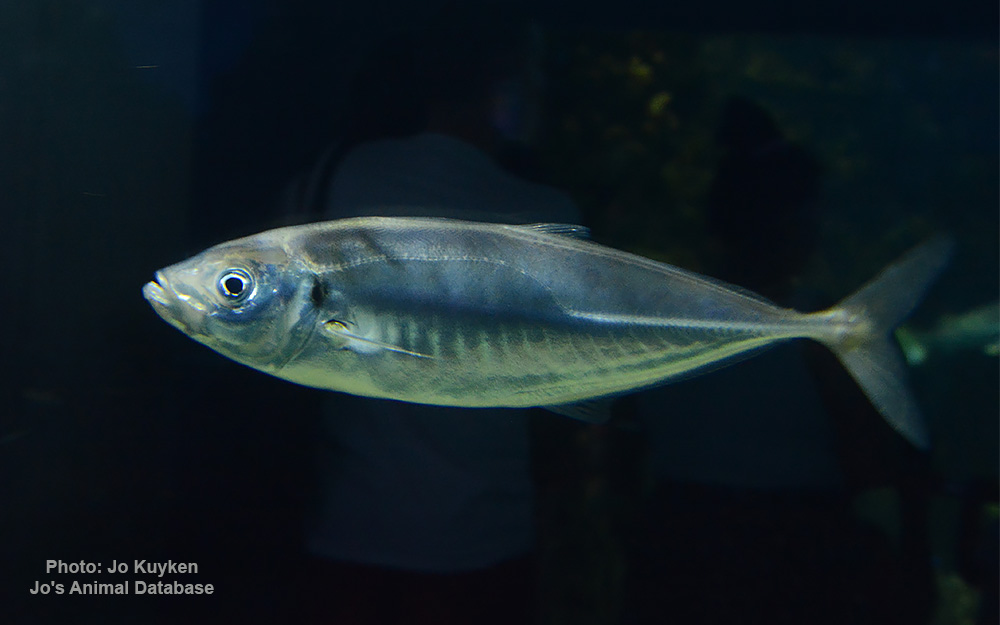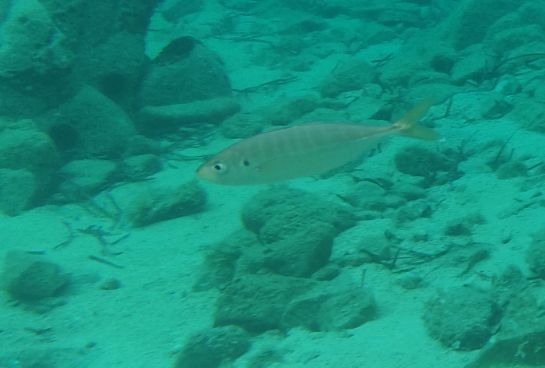Mediterranean horse mackerel
(Trachurus mediterraneus)

Image source: Jo's Animal Database
Classification
General data
The Mediterranean horse mackerel (Trachurus mediterraneus), also known as the Black Sea horse mackerel, horse mackerel, Mediterranean scad, common scad, or simply scad, is a species of mackerel in the family Carangidae found in the eastern Atlantic from Bay of Biscay to Mauritania, including the Mediterranean Sea.
It is a benthopelagic, subtropical, marine fish that can reach up to 60 cm (24 in) in length.
In the countries near the Mediterranean and Black Seas, it makes up a significant portion of fish catch, 54% of fish caught in the latter. Despite overfishing in the 1980s, catch numbers have leveled out and it is listed as least concern by the International Union for Conservation of Nature.
The Mediterranean horse mackerel has an elongated, compressed body (up to 60 cm (24 in) in length, common length 30 cm (12 in)) with a large head and projected lower jaw. The nostrils are small and close-set and the eyes are protected by a well-developed adipose eyelid. Its upper jaw, or maxilla, is also large and wide. Its body is a dusky color, blue to grey to black in color dorsally and on top of the head, while the lower two-thirds of the body is white to silver in color. Its caudal fin is yellow and it has a distinct black mark just posterior to the operculum. It has 36-41 gillrakers and the anal fin is preceded by two separate spines.
The Mediterranean horse mackerel is found in subtropical waters throughout the eastern Atlantic Ocean from the Bay of Biscay to Mauritania, as well as the Mediterranean Sea, the Aegean archipelago, the Black Sea, the Propontis or Sea of Marmara, and the southwestern Sea of Azov.
Its latitudinal range extends from 49°N to 28°N and its longitudinal range extends from 13°W to 43°E.[2] The subspecies T. m. mediterraneus is found in the Mediterranean Sea,[4] while the T. m. ponticus subspecies, also called the Black Sea scad, is native to the Black Sea, the Sea of Marmara, and the Sea of Azov.













